The premium segment always lacked the offer from the main manufacturers, since that is not enough just to announce the device as status; it has to prove this name. Due to that plenty of status devices by unknown manufacturers using technological materials were unnoticed practically and the last example is Mobiado Professional. In the absence of a famous brand the device is taken not as a premium solution. Nokia tried to provide unique offers to its users in this segment and keep the price high as long as possible. That is the main Nokia's difference from other manufacturers, a product that may be compared to other devices in functions is launched, but still it has unique features and design. That is how long life and slow price decrease is achieved. This practice was possible till today, since no manufacturer tried acting in this niche, but the market strategy changes and the Nokia 8800 won't be the only product of the class. However at least for 7-8 months the device will dominate in its segment, which will allow fixing its price automatically. That makes the Nokia 8800 interesting for many users, since the phone status will remain the same more than for a year, and price decrease won't touch it unlike the majority of the devices. Besides the price questions technical solutions of the Nokia 8800 are of interest today.
The device is designed as a popular today slider, Nokia lacked such devices till recently. The Nokia 8910 may be considered the maximum close to smartphones, but here another mechanism pulling the functional part up from the external one is applied. No significant parts of the device were gathered in the bottom end. The Nokia 8800 is unique for almost all the body except for the top of the back panel is made of stainless steel. A corresponding note may be seen under the back cover near the SIM-connector. The metal is not claimed nominally, there is really much of it. Particularly, you can take the back cover and look at its thickness, it is about 0.5 mm, in other models the thickness of twice less. This lavish use of the metal gives the impression of reliability; the device lies well in a hand and is felt as a pleasant heaviness. The feeling is even nicer considering polished surface.

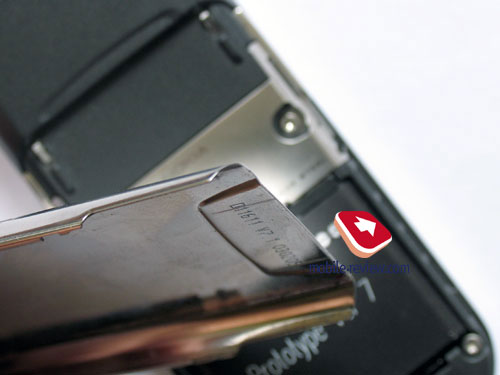
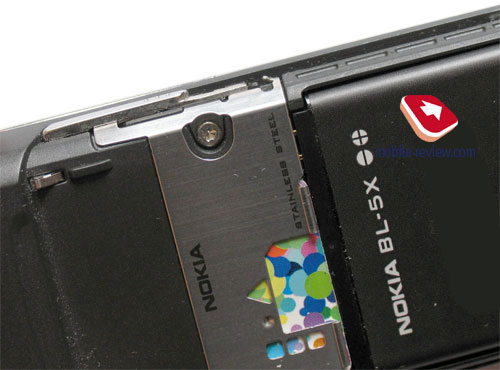
The surface is easily soiled and fingerprints stay on it. And if they are not much noticeable or at least are taken normally on the metal, then on the glass they are well seen. Some will take fingerprints on the phone as a catastrophe and one won't pay any attention on the contrary. It all depends on your perception; fingerprints on the Nokia 8800 do not make a disadvantage, which is the minus of all the polished surfaces.
The weight of the device follows from the materials used and forms 134 grams. Considering the size of 107x45x16.5 mm the device is felt heavier and looks more aerial. I'd like to stress men are the main audience (up to 80 percent of sales). Women can use the phone but considering the Nokia 8850, 8910 sales, there are few of them. The question concerns not the weight of the device or its design; it refers to the primordial positioning of such products by the manufacturer. Have a look on the original photos life style by Nokia, they tell how the manufacturer sees the Nokia 8800 customer (a successful manager, own chauffeur and a limousine, women only shade the Nokia 8800 owner in).

The protective glass is tempered similarly to some medium segment watches with sapphire glass applied. According to the manufacturer sapphire glass protects the screen from scratches perfectly (much better than in usual devices). First this protection is mainly achieved by a well-taken construction. The loudspeaker gap is lifted up from the surface as well as the rest serving for opening the device. If placing the phone with its screen down it will lie on these two points and scratching it seems practically impossible. For the clear experiment the screen was scratched with various objects, and the most scarring trial used metallic keys. The device was put into a packet with 7 keys and a metallic trinket; all these things were put into the washing machine. A minute after the packet was taken out. There was no scratch as such, two small ones appeared during the experiment are not counted. They are extremely hard to notice. However the polished parts of the device show some not deep scratches. The advantage is the scratches are seen only when peered at attentively, otherwise they are unnoticeable. So, let's think the device passed the test successfully.
There is a metallic rest under the screen resembling a loudspeaker gap scrolled in a tube (such nets are present in many household devices as decor elements). A finger is easy to rest on it, though those ones having big arms will have problems with the dirt on the screen around the rest.
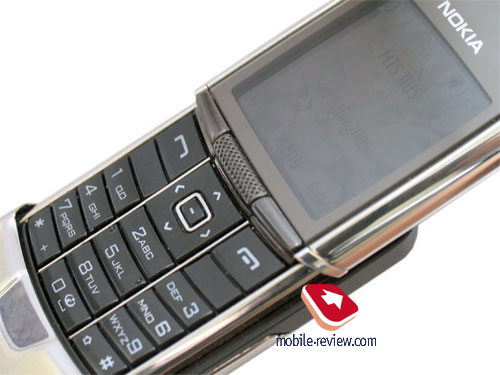
The device comes equipped with an automatic finishing mechanism, thus no special efforts are necessary to open and to close the phone. The motion is smooth and pleasant. Phone edges are rather sharp, which may cause finger damage when opening carelessly especially for the first time. The problem is even not more in the sharp edges but in the closing speed, the parts slide so fast that one may pinch his finger or check if closing with his face. The described problem is temporary, the majority of Nokia 8800 users get used to how to close their phone, and this traumatism finishes.

The keypad is the most arguable part of the device from the ergonomic point of view. The keys are of plastic, placed close to each other and are small in size. Even people with small hands and fingers find it uncomfortable to work with the Nokia 8800. Unfortunately, placing a full-size keypad in such a body was impossible. Another aggravating factor is the bottom key row joins the slider edge too closely, which causes extra problems when pressing. The OK button is miniature and hard to work with. One more disadvantage is the soft-keys are placed on both sides of the rest and are on the level different form the whole keypad. Considering the soft-keys are used in all the actions with the device your will have to move your fingers from one level to another permanently, at the same time the distance is minimal, which causes even higher fatigability.
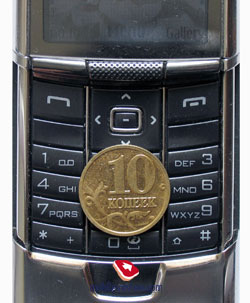
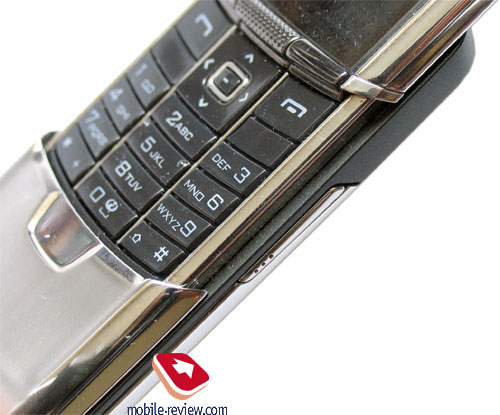
The backlighting is white and well seen in all the conditions. Localized versions will provide no Latin characters on the keys besides the local one; since there is no room for two character rows (two rows would be practically unreadable and will cross all the value of the approach).
Speaking on the phone is possible in a closed mode; you can accept a cal or switch off the sound. Repeated pressing of the soft-key cancels a call, thus making it in one touch is impossible. A closed Nokia 8800 is a thing in itself; nothing can be done with the phone, only changing the profiles with an On/Off button on the top of the device. Successive pressures of the button scroll the list and holding it for long allows selecting a profile.

It's quite a riddle for us why a question if locking the keypad is necessary appears when closing the device. It is on by default. An attempt to leave the keypad unlocked gives no practical effect, since neither viewing SMS nor dialing a number is possible.
The absence of a side volume button is a serious minus. The volume is adjusted with a navi button during the conversation, thus you have to take the device out of your ear. Considering the company hasn't realized the technology for tuning the volume depending on the surrounding noise, which may be considered an omission. Thus the max volume is too much in a quiet room but still is quite comfortable in the street. It's curious the device provides tuning a loudspeaker for the signal conditions, which is some kind of an equalizer improving the speech quality (hiding noises, croaking) in problematic zones. A similar technology by Samsung called Voice Clarity is applied in the majority of the today devices.
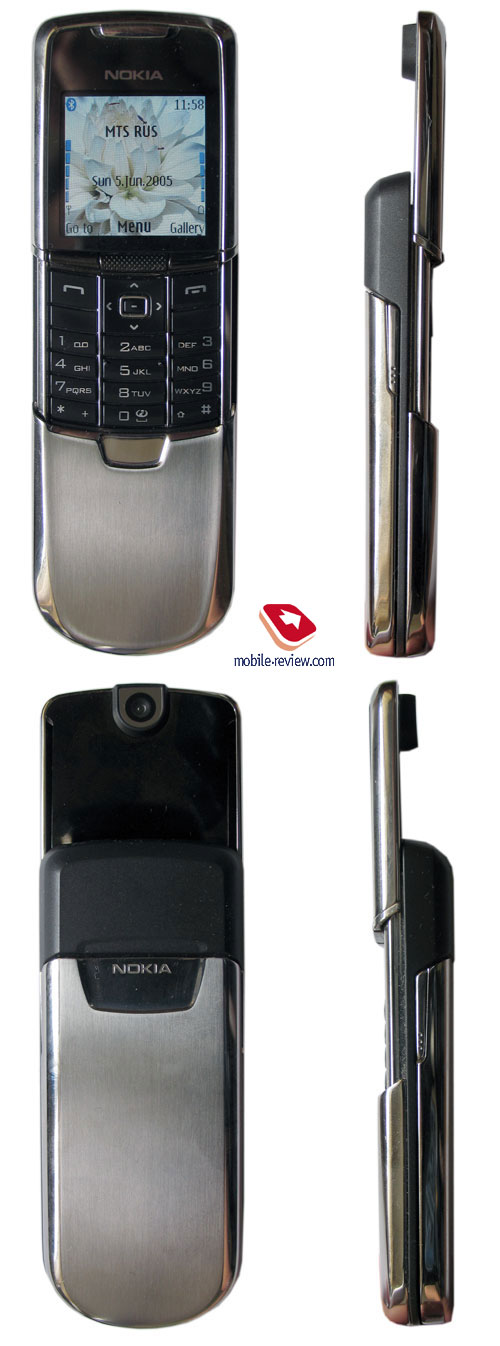
The screen is similar to the Nokia 6230i. That is a 208x208 pixels TFT matrix with a physical resolution of 31x31 mm, 262K. The small screen size makes the picture very smooth and pleasant. The screen is perfect for a product with such dimensions and has no copies in this segment. By the way, the screen size didn't allow making the keypad more comfortable. Up to 5 text and 2 service lines are shown on the screen. You can change the font-size, and the number of shown lines decreases to 4 with the biggest font-size, the font readability rises insignificantly, the smallest font allows up to 6 lines. The screen is readable in the sun, though thin fonts are almost invisible. The change of the font-size (its decrease) became a necessity due to the high resolution. The quality of the photos taken with an integrated camera is not bad mainly due to the screen characteristics, though the colours are pale, especially as compared with the preinstalled graphics.
No comments:
Post a Comment